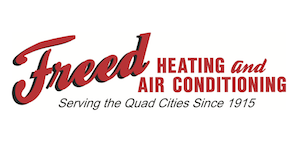
We spend a good majority of our time inside. As a matter of fact, the Environmental Protection Agency (EPA) has estimated being within a building comprises 90% of our schedule. Although, the EPA also has determined your indoor air can be three to five times dirtier than outside your home.
That’s because our homes are securely sealed to increase energy efficiency. While this is fantastic for your energy bills, it’s not so good if you’re a part of the 40% of the population with respiratory allergies.
When outdoor ventilation is insufficient, pollutants like dust and volatile organic compounds (VOCs) may get stuck. Consequently, these pollutants may worsen your allergies.
You can enhance your indoor air quality with fresh air and regular housework and vacuuming. But if you’re still having issues with symptoms when you’re at your residence, an air purifier could be able to help.
While it can’t remove pollutants that have gotten trapped in your furniture or carpeting, it might help freshen the air circulating around your residence.
And air purification has also been scientifically verified to help lessen some allergic symptoms, according to the American College of Allergy, Asthma and Immunology. It could also be useful if you or a loved one has lung trouble, like emphysema or COPD.
There are two kinds, a portable air purifier or a whole-home air purifier. We’ll go over the distinctions so you can determine what’s correct for your residence.
Whole-House Air Purifier vs. Portable Air Purifiers
A portable air purifier is for one room. A whole-house air purifier works with your HVAC equipment to treat your entire residence. Some kinds can work on their own when your home comfort system isn’t running.
What’s the Best Air Purifier for Allergies?
Look for a model with a High Efficiency Particulate Air (HEPA) filter. HEPA filters are used in hospitals and provide the most comprehensive filtration you can buy, as they catch 99.97% of particles in the air.
HEPA filters are even more powerful when used with an ultraviolet (UV) germicidal light. This powerful combination can eliminate dust, dander, pollen and mold, all of which are standard allergens. For the best in air purification, think over a system that also has a carbon-based filter to eliminate household odors.
Avoid getting an air purifier that makes ozone, which is the top ingredient in smog. The EPA warns ozone may aggravate respiratory problems, even when released at low concentrations.
The Allergy and Asthma Foundation of America has made a list of questions to ask when purchasing an air purifier.
- What can this purifier remove from the air? What doesn’t it extract?
- What’s its clean air delivery rate? (A better amount means air will be freshened more rapidly.)
- How frequently does the filter or UV bulb need to be switched]? Can I finish that by myself?
- How much do new filters or bulbs cost?
How to Reduce Seasonal Allergy Symptoms
Want to receive the {top|most excellent|best] results from your new air purification system? The Mayo Clinic suggests completing other steps to decrease your exposure to things that can trigger seasonal allergies.
- Stay indoors and keep windows and doors sealed when pollen counts are elevated.
- Have someone else mow the lawn or pull weeds, since this work can irritate symptoms. If you are required to do these jobs yourself, you might want to consider trying a pollen mask. You should also bathe without delay and put on clean clothes once you’re finished.
- Avoid hanging laundry outside.
- Run the AC while at your house or while in the car. Consider using a high efficiency air filter in your house’s HVAC unit.
- Equalize your home’s humidity percentage with a whole-house dehumidifier.
- Hardwood, tile or linoleum are the ideal flooring materials for lowering indoor allergens. If your house has carpet, use a HEPA filter on your vacuum cleaner.
Let Our Professionals Take Care of Your Indoor Air Quality Needs
Ready to move forward with adding a whole-house air purifier? Give our professionals a call at 309-323-9584 or contact us online to request an appointment. We’ll help you choose the ideal equipment for your residence and budget.
